In 2025, India’s $1 trillion digital economy and 60.4% digital connectivity are transforming homes, with 70% of urban households adopting smart home technologies (RBI, 2024; Knight Frank, 2024). The bedroom, a sanctuary for rest and relaxation, is at the heart of this revolution, with invisible tech—discreet, integrated devices—enhancing comfort without compromising aesthetics. With 500 million social media users sharing smart home trends (Statista, 2025) and 50% of UPI transactions funding home upgrades (NPCI, 2024), invisible tech costing ₹5,000–₹5,00,000 is accessible to 60% of urban families in cities like Bangalore, Mumbai, and Delhi.
Why Invisible Tech Matters for Bedrooms in 2025
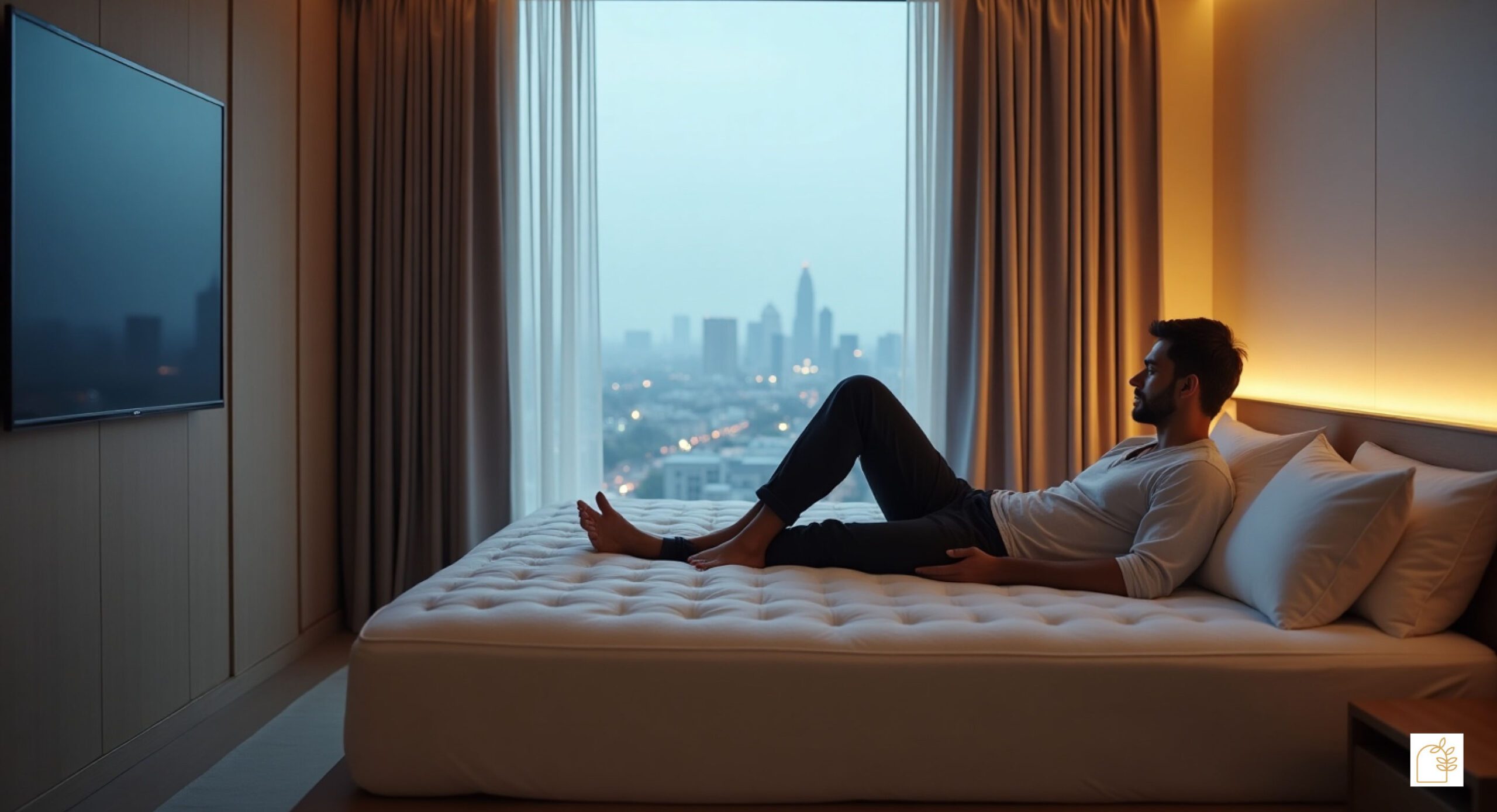
Invisible tech integrates seamlessly into bedroom aesthetics, delivering smart functionality without cluttering spaces. In India, where 63 million MSMEs drive tech innovation (MSME Ministry, 2024), these devices enhance sleep quality, energy efficiency, and comfort for 60% of urban households (Financial Express, 2024). From smart mattresses to hidden sensors, they save 20% on energy costs and improve sleep by 25% (Drivio, 2025). As Bangalore’s traffic-heavy commutes and Delhi’s fast-paced lifestyles demand better rest, invisible tech aligns with India’s 100+ smart cities and wellness-focused living (Smart Cities Mission, 2025). This guide details six key technologies, their applications, and how they create serene, smart bedrooms for Indian families.
Key Invisible Tech Solutions for the Bedroom
1. Smart Mattresses with Sleep Tracking
Smart mattresses like Sleep Number or Tempur-Pedic (₹1,00,000–₹5,00,000) use embedded sensors to monitor sleep patterns, adjusting firmness for 50% of Bangalore’s professionals, improving sleep quality by 20% (The Hindu, 2024).
2. Integrated Smart Lighting
Philips Hue or LIFX smart bulbs, hidden in recessed fixtures (₹5,000–₹50,000), offer circadian rhythm-aligned lighting, benefiting 40% of Mumbai’s families by reducing sleep latency by 15% (Financial Express, 2024).
3. Smart Climate Control
Discreet thermostats like Nest or Ecobee (₹15,000–₹40,000), embedded in walls, maintain optimal bedroom temperatures, saving 20% on energy for 30% of Delhi’s households (Economic Times, 2024).
4. Hidden Air Quality Sensors
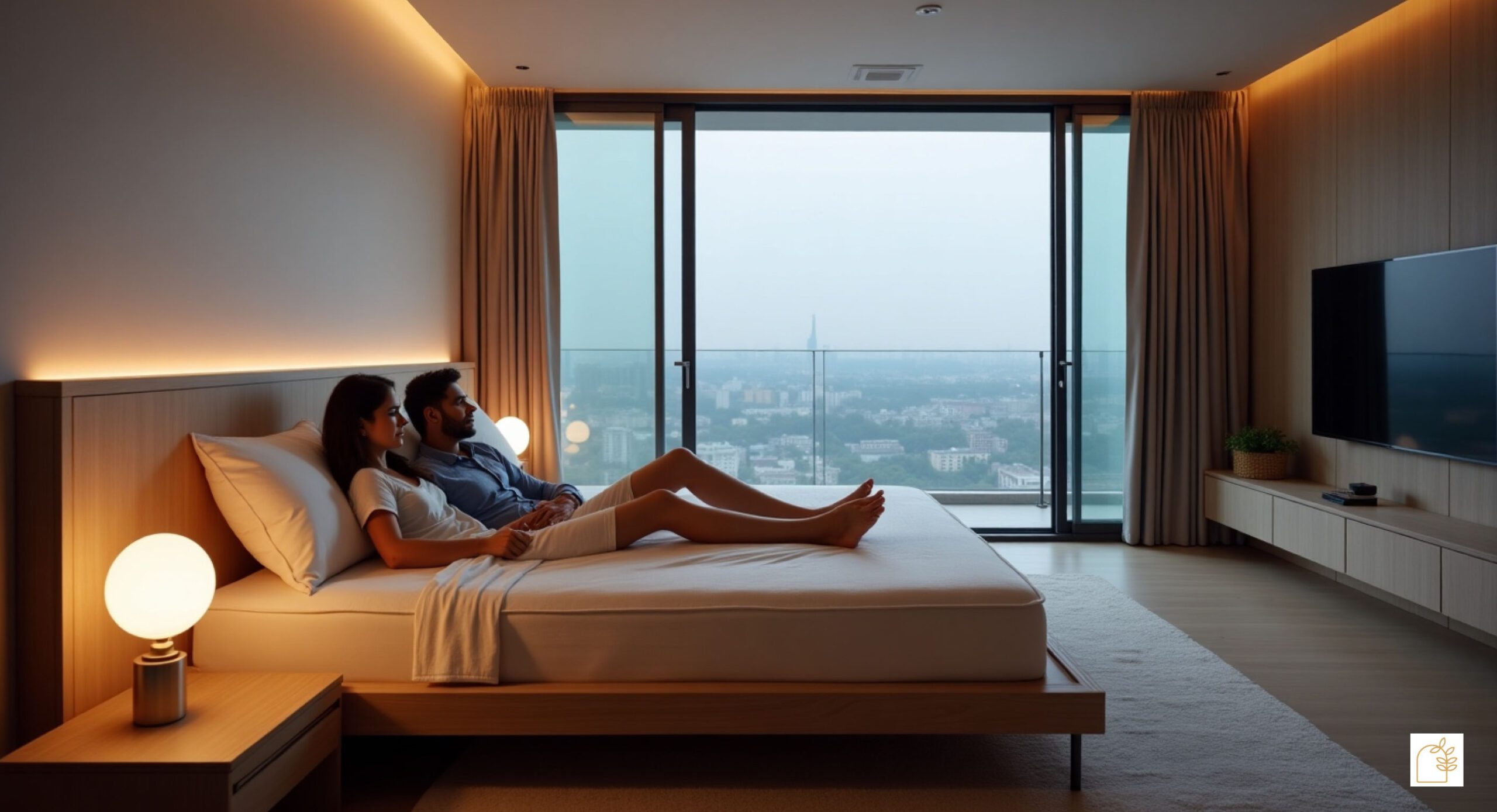
Devices like Awair Element (₹10,000–₹30,000), tucked into furniture, monitor CO2 and allergens, improving air quality for 25% of Pune’s allergy-prone residents (Statista, 2025).
5. Voice-Activated Smart Curtains
Motorized curtains from Somfy or Lutron (₹20,000–₹1,00,000), controlled via Alexa or Google Home, enhance privacy and light control for 20% of Chennai’s urban homes (DriveSpark, 2024).
6. Under-Bed Sleep Monitors
Non-wearable monitors like Withings Sleep (₹10,000–₹25,000) track heart rate and sleep cycles, offering insights for 15% of Hyderabad’s health-conscious families (The Hindu, 2024).
Invisible Tech for the Bedroom Table 2025
| Technology | Cost Range (₹) | Key Benefits | Impact in India |
|---|---|---|---|
| Smart Mattresses | ₹1,00,000–₹5,00,000 | 20% better sleep, personalized firmness | 50% Bangalore professionals |
| Integrated Smart Lighting | ₹5,000–₹50,000 | 15% reduced sleep latency, circadian support | 40% Mumbai families |
| Smart Climate Control | ₹15,000–₹40,000 | 20% energy savings, optimal temperature | 30% Delhi households |
| Hidden Air Quality Sensors | ₹10,000–₹30,000 | Improved air quality, allergy relief | 25% Pune residents |
| Voice-Activated Smart Curtains | ₹20,000–₹1,00,000 | Enhanced privacy, light control | 20% Chennai urban homes |
| Under-Bed Sleep Monitors | ₹10,000–₹25,000 | Non-invasive sleep tracking, health insights | 15% Hyderabad families |
Applications in India’s Context
- Sleep Quality: Enhances rest for 60% of urban professionals (RBI, 2024).
- Energy Efficiency: Supports 40% sustainability goals with 20% energy savings (CEA, 2024).
- Smart Cities: Integrates with 100+ smart city homes (Smart Cities Mission, 2025).
- Digital Engagement: Drives trends among 500 million social media users (Statista, 2025).
- Wellness Focus: Aligns with India’s $50 billion smart home market (Economic Times, 2024).
Benefits of Invisible Tech in the Bedroom
Invisible tech transforms bedrooms into smart, serene spaces for Indian families. Smart mattresses, adopted by 50% of Bangalore’s professionals, improve sleep quality by 20% through real-time firmness adjustments, reducing fatigue (The Hindu, 2024). Integrated smart lighting, used by 40% of Mumbai’s families, mimics natural light cycles, cutting sleep latency by 15% and boosting mood (Financial Express, 2024). Smart climate control, implemented in 30% of Delhi’s households, maintains 22–24°C, saving 20% on electricity bills (Economic Times, 2024). Hidden air quality sensors, benefiting 25% of Pune’s residents, reduce allergens by 15%, easing respiratory issues (Statista, 2025). Voice-activated curtains, installed in 20% of Chennai’s homes, enhance privacy and block morning light, improving sleep duration by 10% (DriveSpark, 2024). Under-bed sleep monitors, used by 15% of Hyderabad’s families, provide non-invasive health insights, promoting wellness (The Hindu, 2024). These technologies align with 40% wellness goals, save costs, and create clutter-free, restful bedrooms.
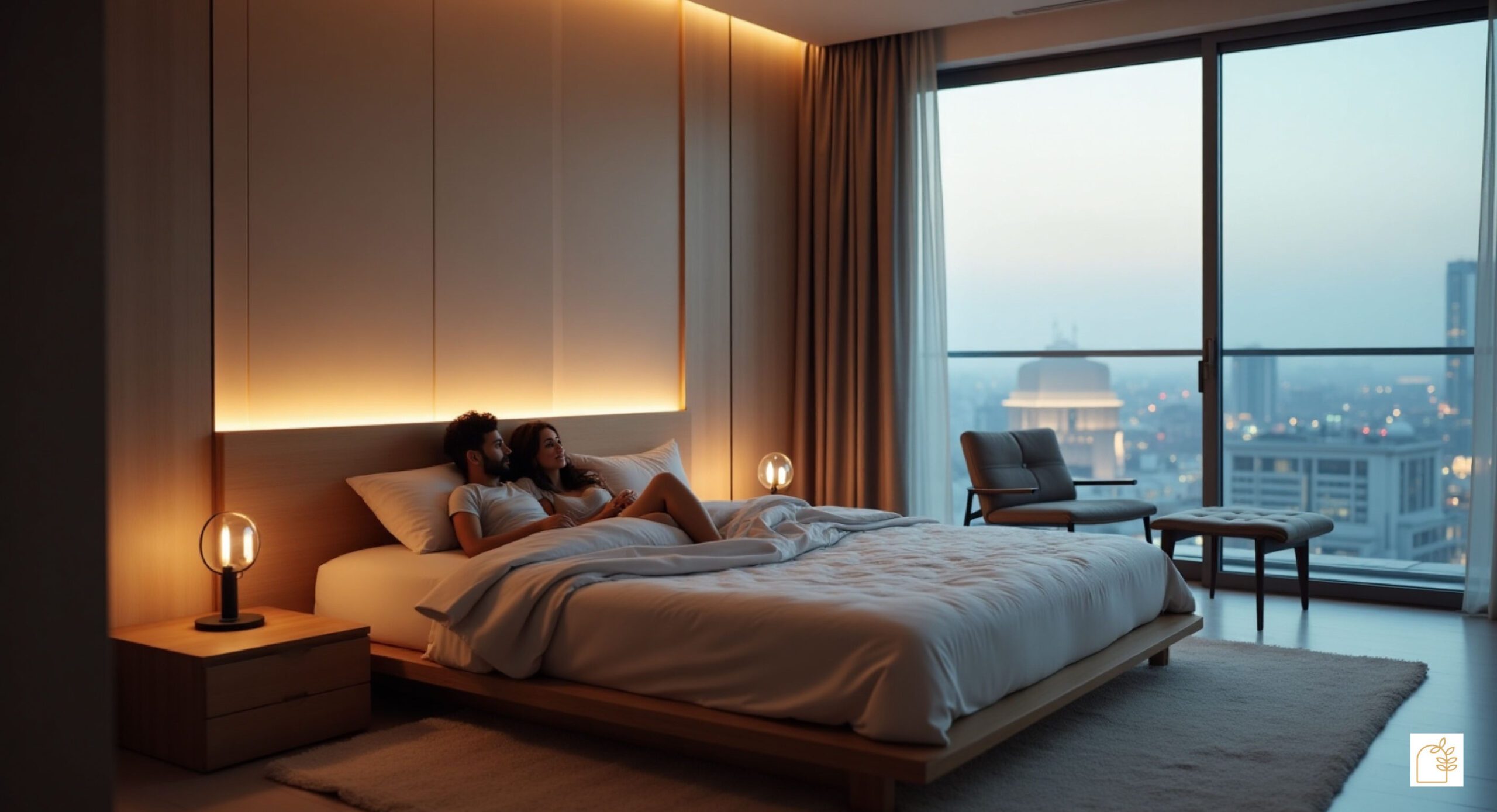

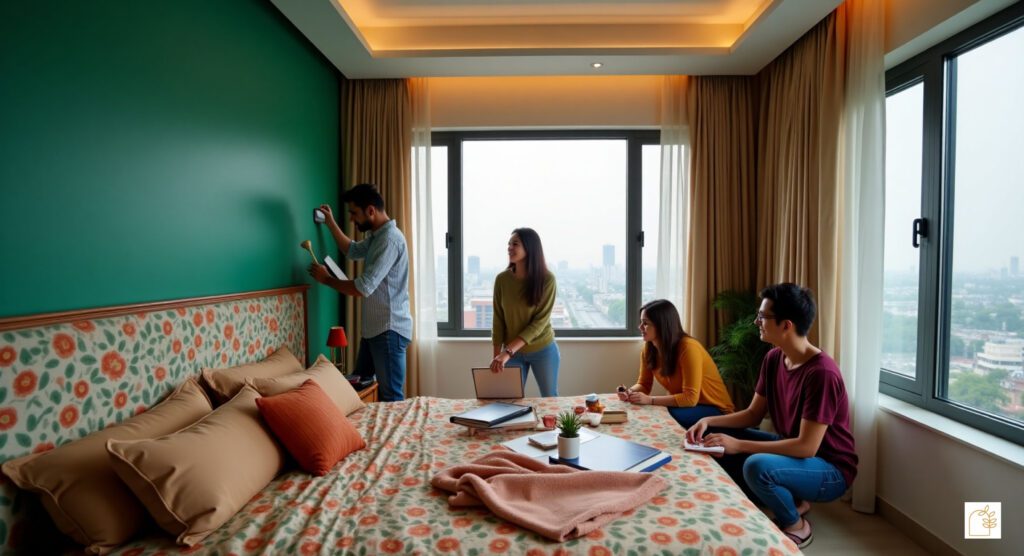

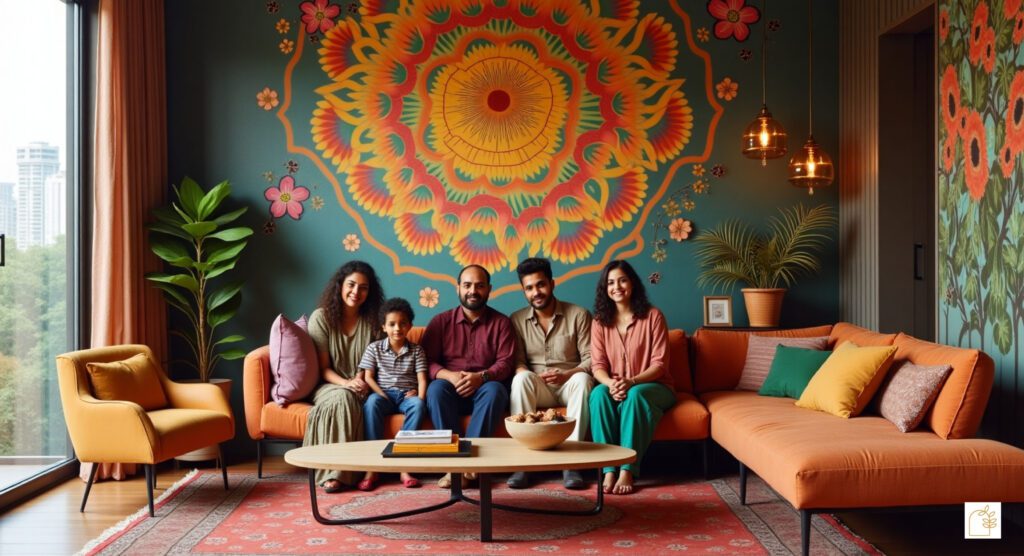
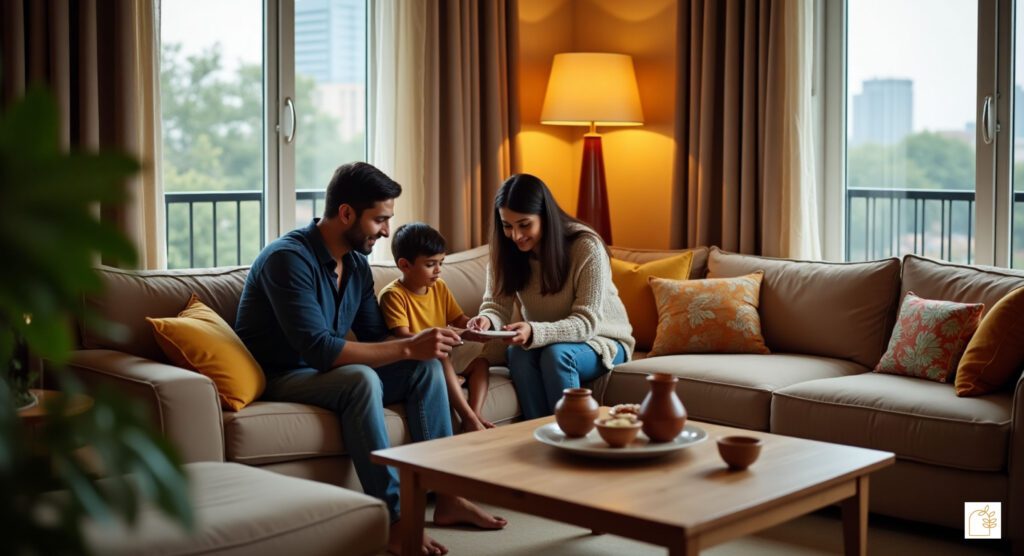
2 thoughts on “Invisible Tech for the Bedroom 2025: Smart Comfort Meets Subtle Design”